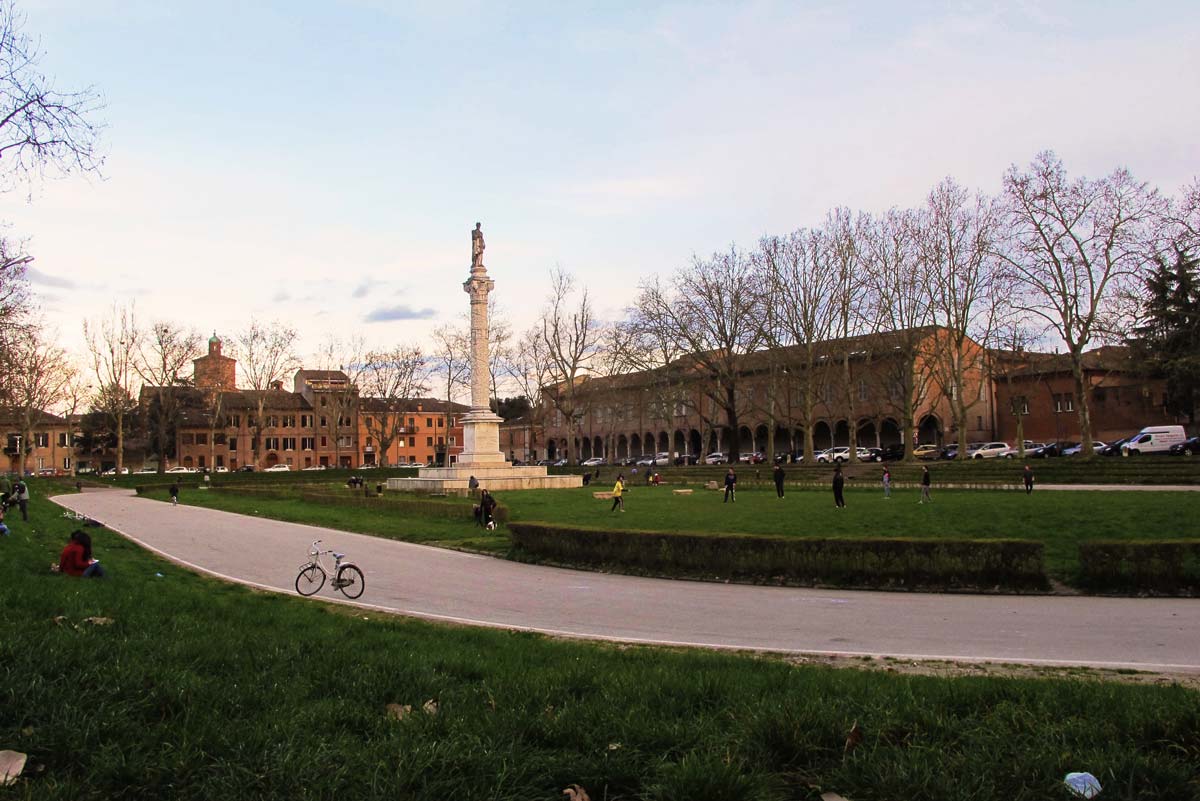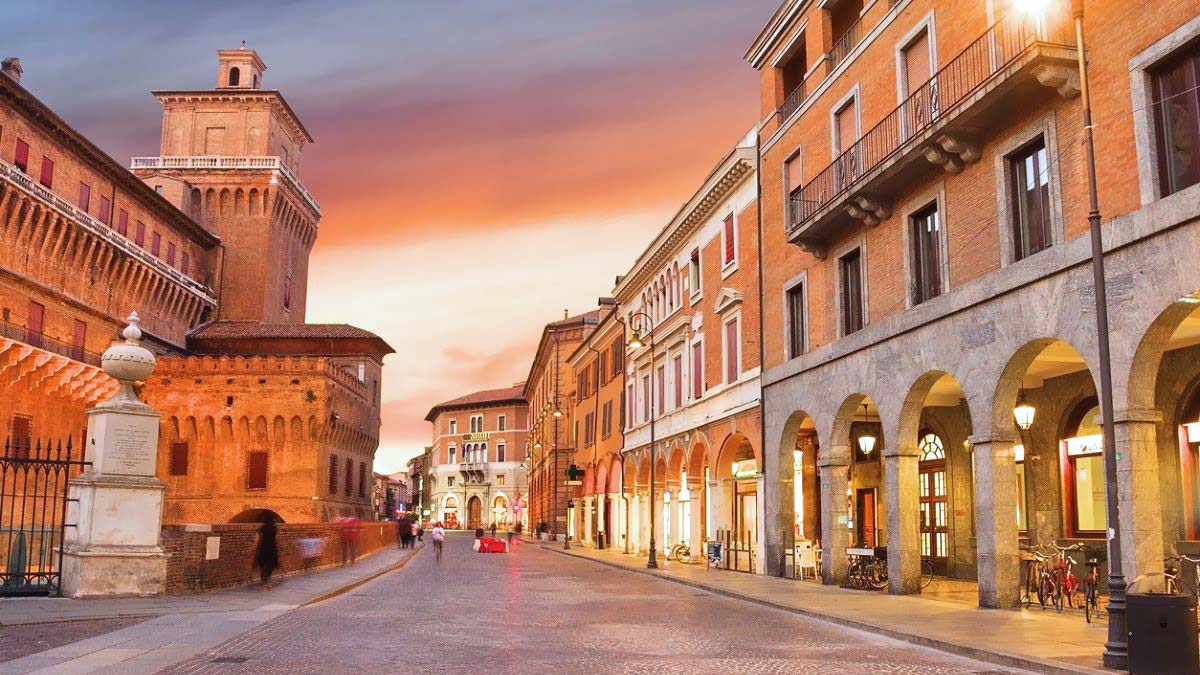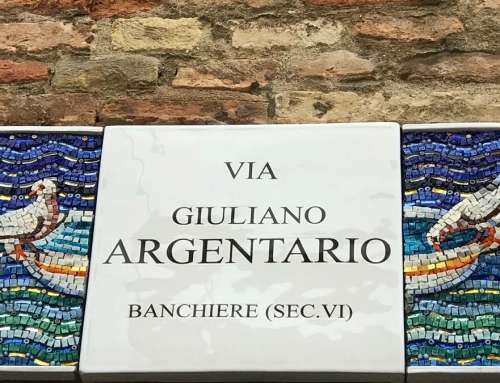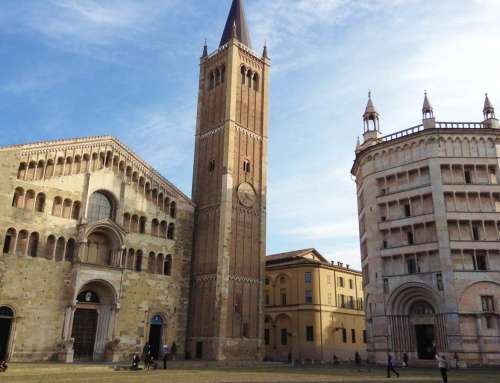A day in Ferrara will allow you to be exploring all of the most important sights and attractions in town, as well as discovering its peculiar, lively and fully authentic Italian lifestyle. I want to share with you all of the reasons I love Ferrara so much! Prepare to be discovering all of the secrets and the most unusual, authentic sights into town, the ones only locals are aware of. Stroll with me under the many ancient Medieval alleys of the city centre, grab a gelato, and be ready to be enjoying the city at its best!
From Estense Castle, core and symbol of the city, ancient fortress changed into a lavish Renaissance palace to the benefit of Este Dukes court, I shall be leading you to the discovery of the ancient, Medieval district of the city, all around Cathedral area, up to the glory of Renaissance district located just nearby, finally reaching worldwide renown Palazzo dei Diamanti (Diamonds’ Palace) and Casa Romei.
Stops will be arranged at Estense Castle with entrance to Ducal Apartments, Ferrara City Hall, Cathedral and nearby Main Square, Cathedral Museum, ancient Jewish Ghetto area, Medieval district and Vaults’ street (Via delle Volte), Renaissance district, Diamonds’ Palace (Palazzo dei Diamanti), Ariostea Square, Casa Romei.
Full day walking tour of Ferrara is 6 hours long. Full wheelchair accessibility to all stops.
Meeting point
Meeting point is at the bottom of Monument to Savonarola, Piazza Savonarola, right in Ferrara city centre, located between Estense Castle and City Hall. That is where your tour will be leaving from. Of course, it is also possible to be arranging meeting with me right at the hall of the hotel you’re staying in, if located in Ferrara city centre.
For those reaching the city by bus, meeting point will be arranged at Viale Cavour n. 5, drop off point for tour buses, just a few meters away from Estense Castle.
Tour details
Majestic and imposing, Renaissance Estense Castle is the symbol of the city itself. It’s not just a common castle, but rather the epitome of all fortresses of Europe, most of them having been inspired by it. Originally intended as military stronghold to the benefit of Este Dukes, the castle offers you a unique view, still surrounded by a moat filled with running water. And it is one of the few castles in Europe still to do so. Topped by four majestic towers, it served as seat of Este Dukes court, here ruling. Don’t worry: I will be mentioning about the lavish extravaganza and luxuries of Este Dukes court, competing with the one of the Medici family, in Florence. On the inside, I shall be leading you to the discovery of the stunning, late 16th century-decorated Ducal Apartments, private chapel and orangerie, as well as entering the ancient kitchens of the Castle and its prisons, where unfortunate lovers Ugo and Parisina languished until their deaths. It’s not a chance ghosts are still haunting this place!
Just flanking the Castle, majestic City Hall served as Palace for the Dukes, before moving into the fortress itself: I shall be showing you the lavish, Venetian-style marble staircase, as well as the Renaissance statues the Dukes built for themselves, dressed up as Roman emperors. Apparently, showing off was quite the concept back in the day, too.
Medieval district, core and cradle of the city itself, surrounds the ancient, one thousand years old Cathedral of the town: looking as a compromise of Romanesque and later Gothic style, the majestic building is topped by a glorious, pink-marble built Renaissance bell tower. This is where I’ll introduce you to Nicholaus, ancient 12th century sculptor who was said having been turning living people into stone: that’s how dangerously realistic his statues were! Here is Loggia of the Merchants, intended to host ancient, one-thousand years old merchants’ shops and booths, facing the Main Square of the city, elegant open-air drawing room of the city itself.
Also located in the Square is St. Romano Church, ancient parish church where pilgrims looked for shelter on their way down to Rome. Now deconsecrated, the building now hosts the Cathedral Museum of Ferrara: this is where some of the most precious works of art of all city are preserved, from Medieval carved plaques (unicorns, mermaids, dragons) formerly decorating the gates of the Basilica down to Renaissance Master Cosme Tura’s organ shutters, depicting St. George, high on his prancing horse, killing the dragon at his feet. This is chivalry at its best.
All around the Square is a maze of narrow, curvy alleys flanked by all bricks-built buildings: I shall be leading all across them up until reaching picturesque, stunning 11th century Vaults’ Street, where dozens of vaults stretch from one side of the other of the street, joining palaces together. You will be mesmerised by it, and I will be revealing you the reason for such a specific architecture!
Ferrara hosted one of the most ancient Jewish communities of Europe: ancient Jewish ghetto of the town is the district Jews were sadly forced into from early 17th century onwards. This is where Synagogues’ building is located, featuring three different synagogues, including the German School; whereas Spanish School building is located just a couple of blocks away.
The Renaissance district of the town is where modern urbanism was invented six hundred years ago by the Dukes of Ferrara. Majestic Renaissance palaces follow one another. Taking inspiration from ancient Roman urbanism and breaking with previous medieval tradition, they designed a new, modern layout for the city, focused on stunning Angels’ Crossing. Here is, Diamonds’ Palace (Palazzo dei Diamanti) surrounded by a breathtaking, unprecedented texture of more the 8500 diamonds-shaped blocks, legend mentioning a real diamond was hidden in one of them, its architect having been later killed by the Dukes not to reveal true location of it. Also part of the new layout of the city was wide Piazza Ariostea, where tournaments used to happen back in the day, and now central location of Palio of Ferrara.
Property of wealthy banker Giovanni Romei, Casa Romei is a stunning 15th century mansion where time literally froze back at Renaissance times. Extensively decorated by stunning frescoes, the facility offers a most unique chance to be experiencing private life of high bourgeoisie of 15th century. There’s not anything like Casa Romei all throughout Europe. You will mesmerised by its stunning beauty.
Finally, in order to conclude your day in beautiful Ferrara, and returning home with a smile on your face, there would be nothing better then exploring – by taxi or private car renting – the over 9 km of majestic Renaissance defensive walls still encircling the town, or having a drink at the officially-certified most ancient Osteria all across the world, which I’ll be glad to be indicating you!
Entrance fees
Entrance fee to Ducal Apartments into Estense Castle is € 8 per person, reduced to € 6 for visitors older then 65 years of age, between 12 and 18 years of age, or groups larger then 15 people.
Cathedral Museum entrance fee is 6 € per person, reduced to € 3 for groups larger then 15 people.
Entrance fee to Casa Romei is € 3, reduced to € 1.50 for visitors between 18 and 25 years of age. Free admittance for visitors under 18 years of age.















